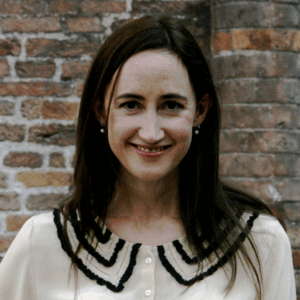
Interview with a Journal: NOON
Everything You Need to Know About the Independent,
Not-for-Profit Annual
Here at Lit Hub, we’re embarking on a new series called “Interview with a Journal.” We’ll be spotlighting standout literary journals and magazines, providing behind-the-scenes information, submission tips for writers, and editor insights.
Our first installment highlights NOON, which was founded in 2000 by Diane Williams, author of How High? — That High (2021).
*
Tell us about NOON. What makes your publication different from other literary journals/magazines?
NOON’s pages are dedicated to celebrating work that fulfills Ezra Pound’s entreaty to “make it new!” Founded by Diane Williams in 2000, NOON is a print annual of literary and visual art. The annual’s name was chosen for a variety of reasons: it was one of Emily Dickinson’s favorite words; the two connecting O’s are the symbol for infinity; and the word is a palindrome that can exclaim backwards and forwards “NO” to ho-hum work. NOON champions established writers, but takes special satisfaction in featuring the newly arrived.
What ultimately distinguishes NOON from other literary magazines is the sensibility and collaborative process of the editors. Just as a writer’s voice makes his or her or their work different from anybody else’s, each of our editors has a distinctive perspective that contributes to the shaping of each edition.
Why do you love literary magazines?
Literary magazines spark active participation—each edition is alive, current, of its time, but has the chance to outlive the era. Where else can you discover a previously unpublished writer, or encounter a multitude of voices arranged by a particular curatorial force?
What is one of your favorite pieces that you’ve published? Why?
There’s such wealth in the annual’s archives! Over the years NOON has featured pieces that seem to have no precedent, or even succedent. The story “Haunt of the Jackals,” by Damien Ober from the 2004 edition, repeats a single word for the duration of its pages.
Also in that edition is the sole work of fiction published by the British psychotherapist and essayist Adam Phillips. The writer Robert Tindall, with his own idiosyncratic syntax and style, has been published only in our pages since 2012, though his NOON stories have been reprinted in places like Harper’s. A.L. Snijders’ zkv suite from the 2012 edition, translated from the Dutch by Lydia Davis, stands out for its introduction of Snijders’ term for “very short story” or zeer korte verhaal (zkv) into English. And that’s not even mentioning the many NOON stories that have been anthologized or won prizes or led to debut books. How could we have favorites among such a trove?
How did being on the staff of a literary journal/magazine change the way you read?
At NOON, our reading process is one of mining for the best language in the hopes of bringing whatever work we engage with to its most powerful condition. We’re always seeking sentences with the potential to delight, surprise or frighten. In staff meetings, submissions under serious consideration are read aloud sentence by sentence, word by word. Working at NOON has made us more attuned to the way the sounds of language are inseparable from the story.
What is the most important thing that a writer should include in their cover letter/pitch?
NOON pays no mind to cover letters. In fact, some of the most exciting fiction we’ve published arrived with no cover letter. Diane Williams reads every submission, regardless of whether it’s come through an agent or the author has been previously published. What we care about is the work on the page.
What are some subjects or topics you want to see writers address in their work?
Subject and topic generally have no bearing on the quality or impact of the text. One could write about anything and have a killer tale.
What do you look for in new authors you publish? What should stand out in terms of their work and style?
We try not to have a formulaic notion of what a NOON writer is. Otherwise, how could we be surprised? How could we discover work that is unprecedented?
Of course, we are always on the lookout for an original, authoritative voice, a serious engagement with language, and displays of moral courage—taking the necessary risks to write something true. We’re often drawn to work that is somewhat mysterious. We believe mystery is key to any work of art.
Please describe your submission process, including relevant details about reading periods, submission fees (if applicable), deadlines, what you pay for accepted pieces, upcoming special issues, and contact information.
NOON welcomes submissions via snail mail. Our reading period is all year long. Please send manuscripts to:
NOON
℅ Diane Williams
1392 Madison Avenue PMB 298
New York, New York 10029
There are no submission or reading fees, but we do ask that all submissions include a self-addressed, stamped envelope. (In the case of international submissions, the SASE can be omitted. Please make sure to include your contact details with your manuscript so we can get in touch with you if your story is accepted.)
Simultaneous submissions are okay, as long as we are notified immediately if the manuscript is accepted by another publication. We do not hold manuscripts; all submissions are read and responded to within a matter of weeks.
We recommend perusing previous editions of NOON prior to submitting!
–Senior Editors Rachel Chait, Zach Davidson, Madelaine Lucas, Liza St. James
Vanessa Willoughby
Vanessa Willoughby is a writer.



















